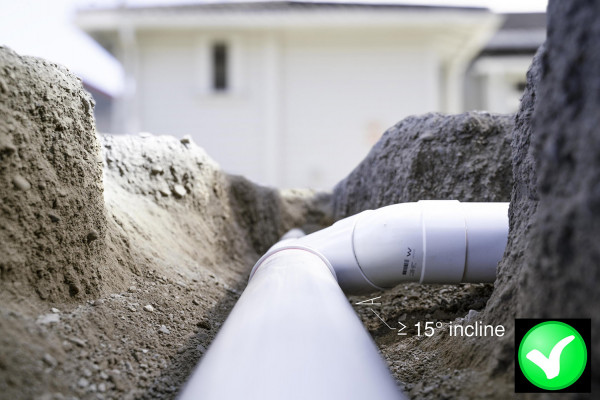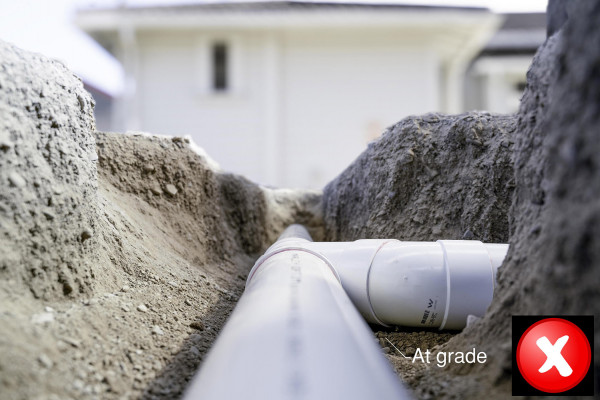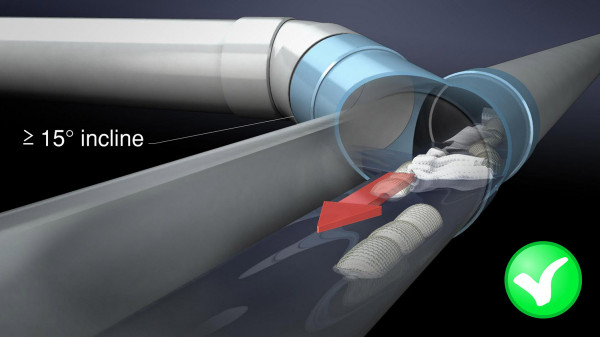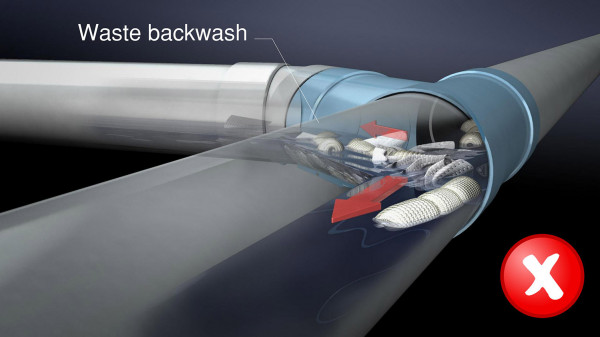Reducing drain blockages
Information on installation requirements for sanitary plumbing and drainage system junctions to reduce the likelihood of blockages and support the use of water efficient fixtures.
As part of the November 2023 Building Code updates, the 2021 edition of AS/NZS 3500 Plumbing and drainage - Part 2 Sanitary Plumbing and drainage was cited in G13/AS3.
This edition of AS/NZS 3500.2 includes updated provisions for junctions installed at grade, to reduce the likelihood of drain blockages and support the use of water efficient fixtures.
Refer to AS/NZS 3500.2 Section 4.9 Junctions in drains (drainlaying) and Section 6.6 Graded discharge pipes (sanitary plumbing)
What this means for you
The connection of any graded drain or discharge pipe to another graded pipe must be done using a 45° ‘Y' junction. 88° ‘sweep’ junctions are not permitted for connections to graded drains or discharge pipes.
For new installations, DN100 45° equal junctions installed in graded drains and discharge pipes must be installed with an incline of not less than 15° above the horizontal.
Inclining the junction no less than 15° above the horizontal removes the probability of the partial backwash of wastewater back up the branch of a junction. This can cause stranding of solid matter within the pipe and lead to blockages.
AS/NZS 3500.2 also allows for DN100 45° equal junctions to be installed on grade without a minimum 15° incline for repairs, maintenance, or extensions to existing drainage systems or where WC pans are not connected upstream of the junction. It is however recommended that all junctions are installed with a minimum 15° incline, where possible.
Where unequal junctions are used, the invert of the smaller branch pipe must be at least 10 mm higher than the soffit of the pipe to which it connects, when using AS/NZS 3500.2 to comply with the Building Code.
These provisions apply to both sanitary plumbing and drainage installations, whereas previously they only applied to drainage installations.
Similar provisions have also been included in Acceptable Solutions G13/AS1 Sanitary plumbing and G13/AS2 Drainage, to decrease the likelihood of blockages occurring.
Key points:
- Use 45° ‘Y' junctions: Ensure graded branch pipes are connecting using 45° ‘Y' junctions (below and above ground). 88° ‘sweep’ junctions are not permitted.
- DN100 equal junctions: Ensure junctions have a minimum 15° incline when connecting graded DN100 branch pipes (below and above ground).
- Unequal junctions: Ensure the invert level of the smaller connecting branch pipe is a minimum 10 mm higher than the soffit of the pipe it connects to.
 DN100 drain with 45° equal 'Y' junction installed with a ≥15° incline above horizontal.
DN100 drain with 45° equal 'Y' junction installed with a ≥15° incline above horizontal. DN100 drain with 45° equal 'Y' junction installed at grade.
DN100 drain with 45° equal 'Y' junction installed at grade.
 DN100 drain with 45° equal 'Y' junction installed with a ≥15° incline above horizontal (Illustration).
DN100 drain with 45° equal 'Y' junction installed with a ≥15° incline above horizontal (Illustration). DN100 drain with 45° equal 'Y' junction installed at grade (Illustration).
DN100 drain with 45° equal 'Y' junction installed at grade (Illustration).Benefits of these changes
These new requirements for junctions will help reduce the likelihood of drain blockages by:
- removing the probability of partial backwash of a discharge into branches
- minimising stranding of solids and paper in junctions and branch lines
- improving solid waste transportation within the drainage network by maintaining discharge volumes and self-cleansing velocities
- providing clarity on how to install junctions in graded drains and discharge pipes.
These changes support the ongoing move towards the installation of water efficient fixtures, and in particular toilet cisterns with reduced flush volumes (e.g. dual-flush 6 / 3 litre and 4.5 / 3 litre toilet cisterns).